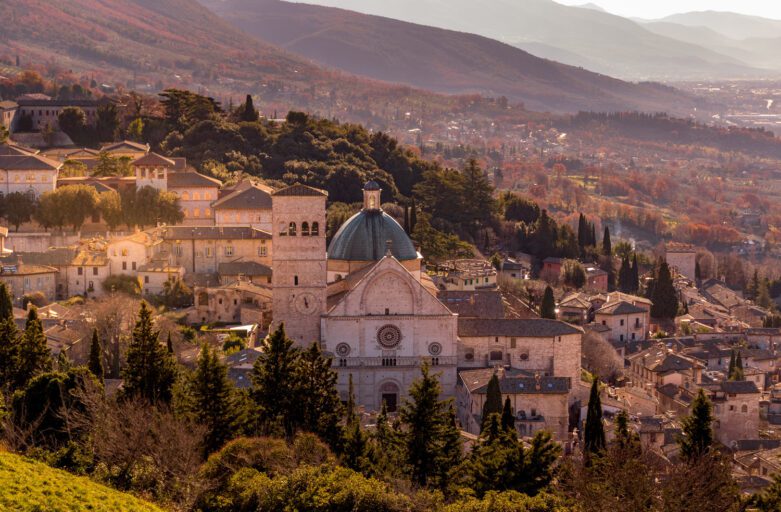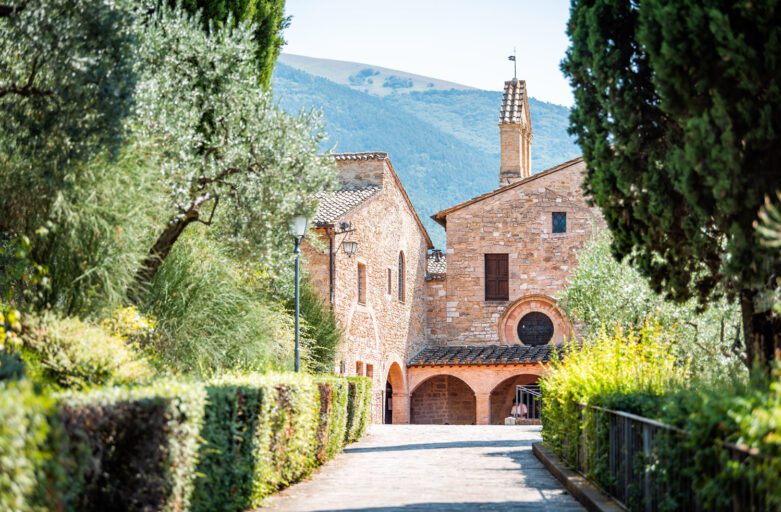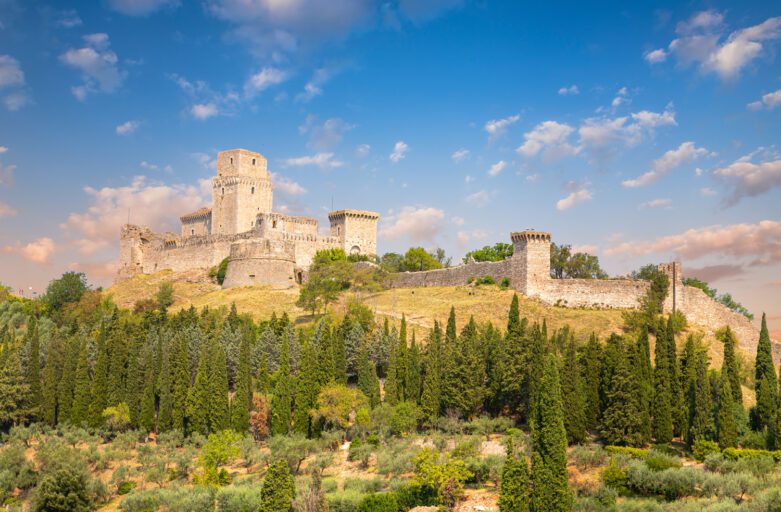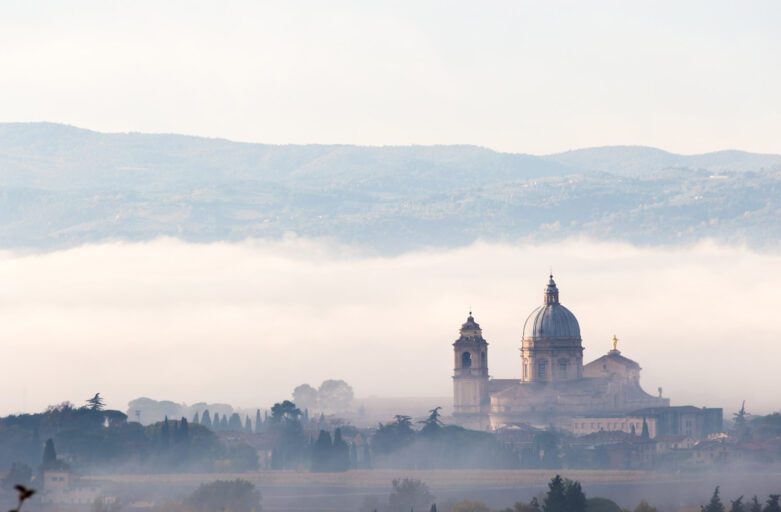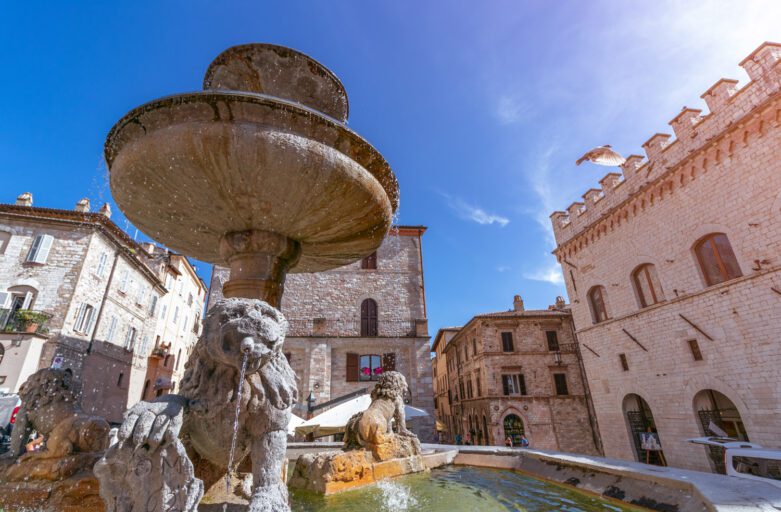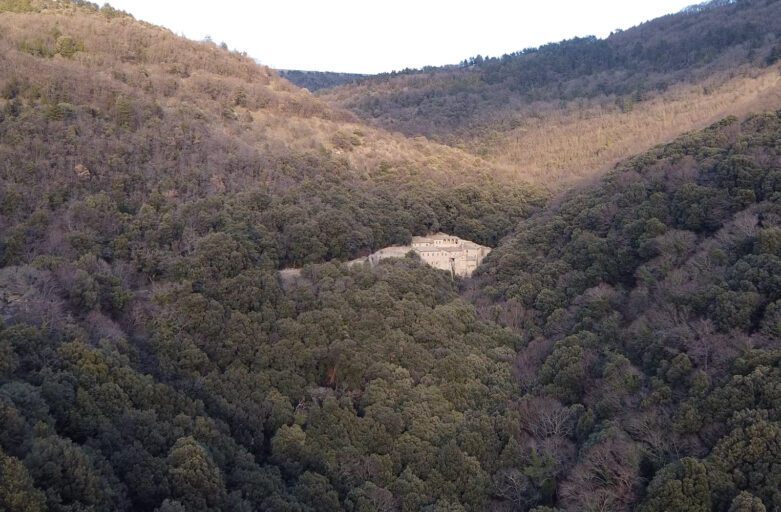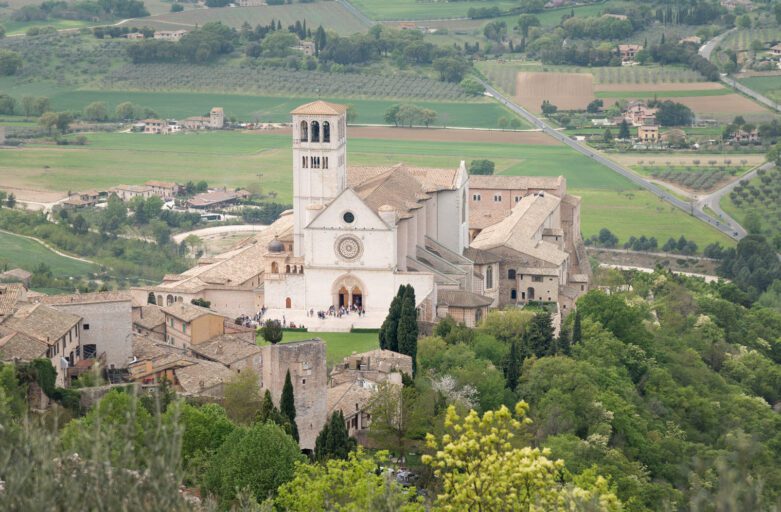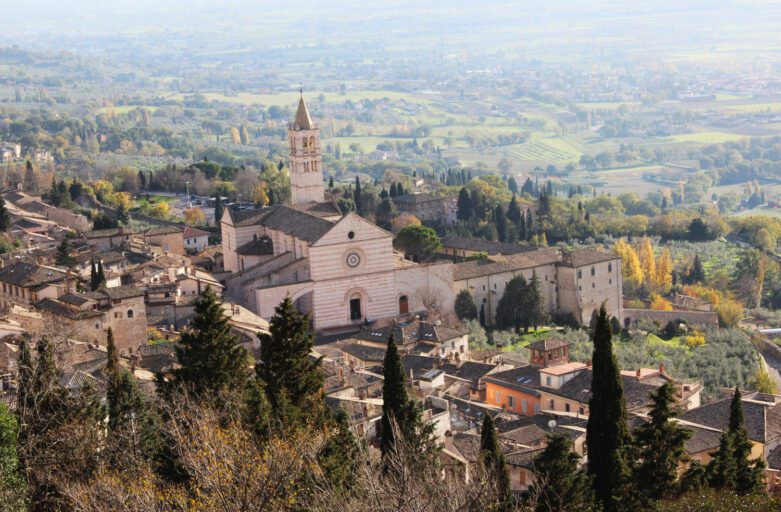Assisi’s Cathedral: info and story of Saint Rufinus and his church, from the Romanic facade to the “tug of war” conflict.
Tag: Assisi
Saint Damian
In the Assisi plain and among the olive trees of the countryside, there is a place much beloved with reference to the Franciscan origins: the Shrine of Saint Damian. Here silence and peace reign, wonderfully framing the view on Nature all around. We actually know little about the origin of this structure, possibly built among the seventh and ninth centuries; and little, too, about the reasons why the church was dedicated to Saint Damian, a medical doctor and martyr whose relics had been taken to Rome in the mid-fifth century. We can anyway say for sure that the history of this very small church, then kept by an old priest, started to be in the limelight in 1205, when one day a 24-year-older called Francis stopped here to pray
The Citadel of Assisi
A Stronghold to Guard Assisi
So sings the Hymn of the Sentinels (Scolte) of Assisi, the town’s hymn:
The trumpet blares, the days ends already,
already the curfew song soars.
C’mon, sentinels, up to the towers,
O armed guardians, hey there!
Heads up, keep silent, and watch!
Heads up, sentinels, and watch!
The Porziuncola and Saint Mary of the Angels
Saint Francis of Assisi and the Porziuncola
The expanses below Assisi are among the most fascinating in Italy thanks to their colors and the view they afford on the town, which follows the contours of Mount Subasio in its white and rose stones. Precisely in this plain did blossom the life flowers of Saint Francis and Saint Clare. The young man, after restoring the Church of Saint Damian, “moved to the place called Porziuncola, where an old church existed, dedicated to the Blessed Virgin, Mother of God, now abandoned and forgotten. Seeing it in such a poor state, and also because he had great devotion toward the Mother of all goodness, the Saint made it his own home, and would finish to repair it in the third year after his conversion.” This is how Thomas of Celano, Francis’ first biographer, reports the Saint’s coming to this “small portion of land” (that is the meaning of Porziuncola) in the plain.
Right around that abandoned little church, possibly built in the fourth century and now given the Saint by the Benedictine monks, the first Franciscan company was founded, a bunch of enthusiastic friends. According to G. K. Chesterton, this became “the home of many homeless men.”
Town Hall Square
The Main Square in Assisi
Piazza del Comune (the town hall square) has always been the hub of social and cultural life in Assisi. Not by chance do all the main streets from the town gates meet here.
Built upon a Roman forum, in the Middle Ages it became the place for the people’s gatherings. Therefore, here rise the most important buildings of town life: the Temple of Minerva, also used as the oldest Town Hall in Assisi (later transferred to Palazzo dei Priori, the palace of Medieval “priors”); the palace of the Capitano del popolo (the “common people’s” – actually, the middle class’ – political spokesman), and the People’s Tower.
The Hermitage of Carceri in Assisi
From Grotto to Shrine
The architectural complex called “Hermitage of Carceri” started and developed around a grotto in which Saint Francis of Assisi used to retreat in order to pray. The Hermitage of Carceri is a place of memory, kept alive by the Franciscan friars who still live there; and a place of witness, as well, permeated with spirituality. Here preserved is not only the very place where Francis talked with God, but also the way in which the little poor friar kept in contact with the Lord while closely in touch with Nature. Francis in fact immersed himself in the contemplation of all created things, which according to him were a sign of God’s love – to the extent of calling even the smallest natural beauty his “sister,” as his biographer, Saint Bonaventure, says: “While considering that all things share a common origin, he felt all the more full of compassion, and called all creatures, however small, by the name of brother or sister” (Legenda Maior, VIII.6). In a thick wood at the feet of Mount Subasio, some 2,400 feet on sea level, during Francis’ time there were natural grottoes and just a very small church called Saint Mary of Carceri. The warm color of the stones, the material in which the church and later the whole shrine was built, is in perfect harmony with the green of Nature all about, and makes this site, embedded in Umbrian woods, a really unique place.
The Basilica of Saint Francis
Saint Francis’ Legacy
When in 1226 Saint Francis of Assisi died at the age of 44, he was already very famous, and his movement – a true religious Order since 1223 – was followed by thousands of people. They immediately felt they had to build a basilica that may keep his remains, show his importance for all the faithful of that era, and preserve his memory. So, on July 15, 1228, Papa Gregorio IX – who had personally been a friend of Francis – declared him a Saint, and at the same time laid the first stone of the basilica on the hill just off the city of Assisi, northward. No more than seven years later, in 1235, the building made of two superimposed churches and a big belfry had already been completed, basically as we still see them nowadays. The Basilica of Saint Francis is undoubtedly one of the most famous and most frequently visited churches all over the world. It unites, in fact, a deep religious significance in connection with Saint Francis, and an exceptional value in itself, both historical and artistic.
The Basilica of Saint Clare
Clare, and the Birth of the Second Franciscan Order
When Francis made his spogliazione (the act of stripping of his garments as well as, symbolically, all possessions) in the main square, Clare was little more than a baby. She belonged to a noble Assisi family, the Offreduccis, and was surrounded by the love of her sisters, besides the comforts of her social condition. Yet, she was conquered by Francis’ act: within her, now grew the seed of interest toward such men who, after leaving everything, lived by begging but also took care of the lepers in the area of the Porziuncola.
